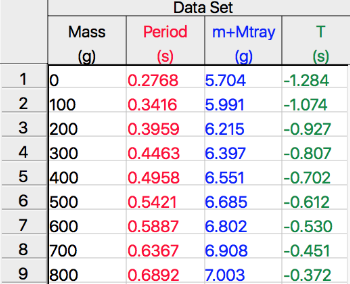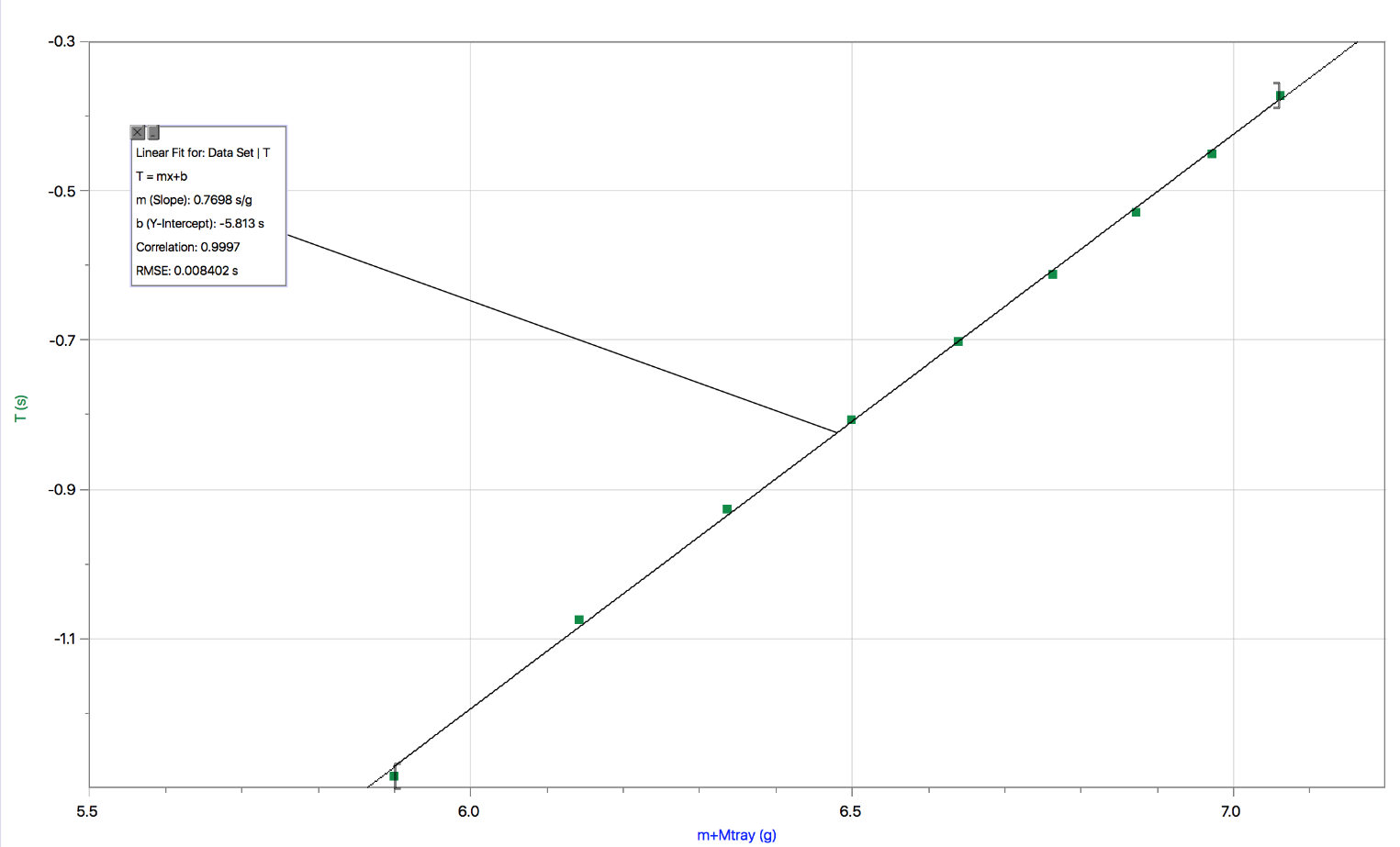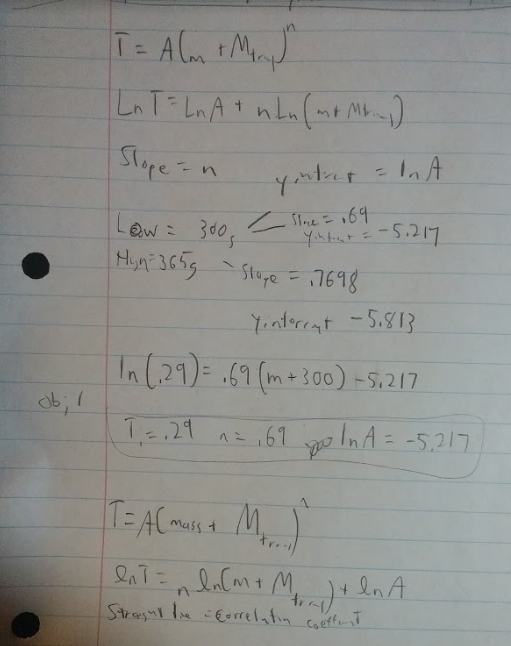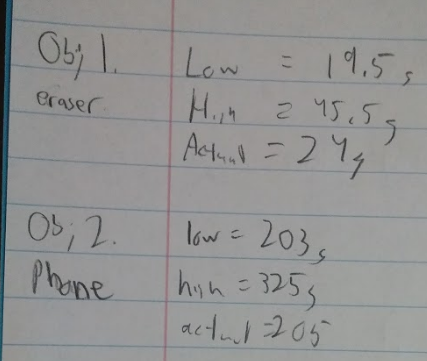Lab 1: Inertial Pendulum
In this experiment, we found the periods of known masses, and periods of unknown masses. We then were able to calculate an approximation of the unknown masses from what we had calculated from the known masses.
Introduction: In the lab, we measured the periods of known masses on an inertial pendulum. From this known mass and period we plotted the data in Logger Pro to create a graph from which we could extract even more data from. It was at this point that we also determined the weight of the pendulum tray, by attempting to get our slope of the line to 1.
Procedure: We started the lab by attaching a inertial pendulum to the table, as shown, and gathered 8 different weights. We then set up a light gate in order to accurately count the periods of time in Logger Pro. We ran the data collection for each weight in order to get a good sample size. Once that was done, we created a data set in logger pro, and plugged in numbers in order to find a number that would make the slope 1, which was impossible, but getting around 1, such as .9999 was acceptable. We then put in two random objects, measured their periods, and calculated their approximate weight. 

Measured Data:

Graph and Calculations:
Period vs Mass of Object and Tray:



Explanation: We graphed the data in order to find a weight of the tray that would be helpful in giving us a slope of 1. Once we were close to this slope of 1, we were able to give a rough calculation of the weight of the two random objects that we had tested.
Conclusion: This lab was very successful. When we calculated the weight of the two unknown objects, and their actual weight, they were, in some cases, very close. Any propagated uncertainty came in the form of inaccuracy of equipment such as scales or light gates, or because the weights were not attatched to the pendulum, and relied only on friction to keep them in place.
No comments:
Post a Comment